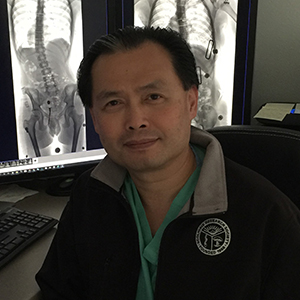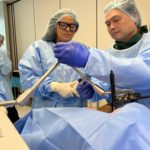Spinal stenosis occurs when the spaces within your spine begin to narrow, which can put pressure on the nerves within the spine. Spinal stenosis occurs most often in the lower back and neck.
Some people with spinal stenosis may not have symptoms, while others may experience pain, tingling, numbness and muscle weakness, with symptoms worsening over time.
Spinal stenosis is most commonly caused by natural wear-and-tear of the spine, typically related to osteoarthritis. In severe cases, doctors may recommend surgery to create additional space for the spinal cord or nerves.
The different types of spinal stenosis are determined by the location on the spine where the condition is found. While it’s possible to have multiple types of spinal stenosis, the two main classifications are:
- Cervical stenosis: The narrowing occurs in your neck.
- Lumbar stenosis: The narrowing occurs in your lower back and is the most common form of spinal stenosis.




